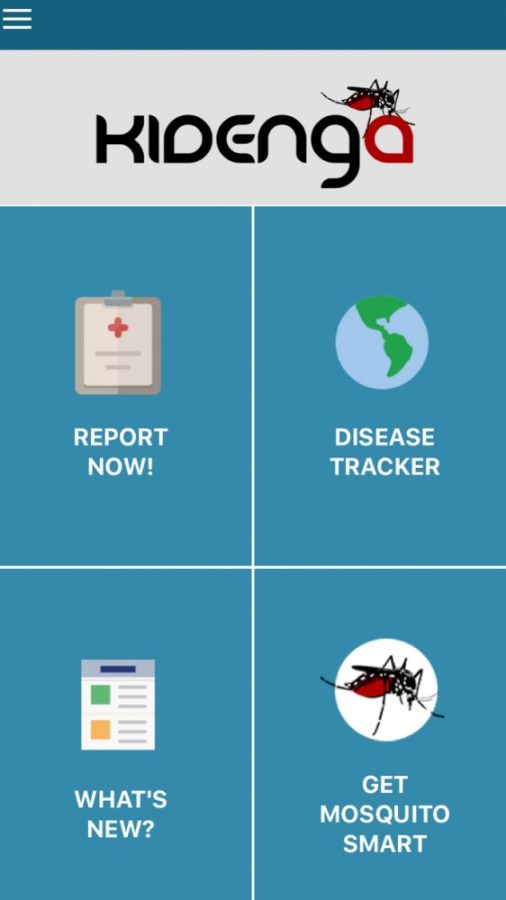Researchers from the UA Mel and Enid Zuckerman College of Public Health worked with the UA Bio Computing Facility on a new mobile phone app that tracks viruses like Zika, dengue and chikungunya.
Kidenga allows users to report any symptoms of the viruses and any activity of day-biting mosquitoes.
Also included are resources and tips for users on how to protect themselves from those viruses.
The goal of the app is to create an early warning system to detect where transmissions of the diseases are occurring, according to Chris Schmidt, a public health master’s student and graduate research assistant for the Kidenga project.
“We believe that better informed individuals and communities are better prepared to prevent or respond to new infections or new outbreaks,” Schmidt said. “So education is a key emphasis of the project.”
The idea behind the app is to get as many people as possible to report symptoms, or a lack of symptoms, and to get more information about the diseases’ presence, according to Schmidt.
RELATED: Public health emergency persists as Zika virus spreads
The app, which debuted on Android several weeks ago and on iOS last week, is available nationwide to anyone over the age of 13.
Schmidt said users receive an email or a push notification on their phone once a week about going to Kidenga and answering questions about symptoms that are associated with the diseases and travel history.
Schmidt said If their answers seem to suggest one of those diseases, users will receive an email with information about how to approach that illness.
To raise awareness of the illnesses, the app also includes a map with location pins of everyone who has reported symptoms during the last week.
Location data like this may be useful to health departments as the app is used more and more data is collected and validated over time, according to Kacey Ernst, a UA associate professor and the principal investigator of the Kidenga project.
Schmidt said they are hoping to establish more partnerships with health departments.
“That’s really the point, is to facilitate work by the health department to address outbreaks or prevent outbreaks in the first place,” Schmidt said.
The app also has information about how many confirmed cases of each disease have been reported in several states on a county by county basis.
Ernst said this feature is only available in Arizona, Texas, Florida and California.
The creation of the project was initially led by the U.S. Centers for Disease Control and Prevention who then partnered with the UA to move the project forward, according to Ernst.
Other partners of the app include the Skoll Global Threats Fund, the Arizona Health Department and health departments in Texas, according to Andrea Rivera, the marketing specialist for the UA College and Public Health and for the Kidenga project.
Ernst said when the app was being developed, the Zika virus wasn’t yet “on anybody’s radar,” and the app was created more for dengue and chikungunya.
But since the same vector transmits Zika, he said the team felt it was important to include the virus.
RELATED: Petri dishes you can wear: UA researchers study the bacteria on the bottoms of your shoes
The app took close to 18 months to develop, and Rivera said the researchers are seeing a “steady increase” of the amount of downloads of users, and social media campaigns about the app have helped.
The scientists involved with the project are working on creating a Spanish language version of the app, Schmidt said.
Ernst said she is excited about the educational component of the app.
She said while governments can do vector control activities, those efforts should be coupled with “community-based grassroots intervention” so that people are vigilant about the mosquitoes.
“It’s crucial that people know about the mosquitoes,” Ernst said. “That people understand what they can do to prevent and control transmission, that they understand how to recognize symptoms, and also that they understand how to recognize when they should seek care.”
Follow Ava Garcia on Twitter.














